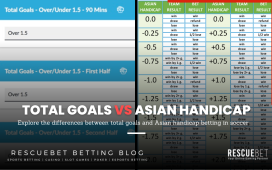Dutching is a horse race betting strategy that includes dutching or, in betting, edging the bookies. Rumor has it that the term Dutching is derived from an accountant, Dutch Schultz, associated with the underworld. Al Capone and Schultz operated several gambling rings and made copious amounts of money from placing and fixing wagers. One of the critical methods used in horse racing is named after the strategy popularised by the duo in the 20th century.
What Is a Dutching Strategy?
Essentially, dutching is making a wager on more than one outcome on a single event. Football could include making a wager on a team to win and a team to lose or on a draw and team to lose. Punters can make a wager on one or more among multiple opponents (or horses) in horse racing. If either of the outcomes wagered on happens, a punter could expect a payout. However, a punter must also consider a wager’s cost on more than one outcome versus the payoff for such a wager. Since a punter is making a wager on more than one outcome, they must consider the ratio to invest their funds. Under a dutching strategy, a punter must split their stake equally. So if a punter is betting on two outcomes, the wager must be split 50-50. However, a punter must also consider each payout and a chance to result in a 50-50 split.
Losing a dutching wager can have a significant impact on a punter’s overall winnings and profitability. However, if a punter splits a traditional stake into two bets, then the effect of the loss is similar to a single wager. In a way, a punter is also breaking the risk of losing a particular wager by backing more than one outcome, which also increases a punter’s chances of winning.
Using Software
The best way to analyze which types of wagers punters can utilize a dutching strategy and still ensure a payoff is by using Excel, R, python, or any other database and statistical software. The software can keep track of all wagers made, the overall profitability and losses, the level of risk associated with each chance or race, the different types of betting options available, or predict future results based on past performance.
Types Of Dutch Betting
- The different types of Dutch betting include:
- Regular dutching wagers with even splits.
- Irregular dutch bets with uneven splits.
- Target dutching involves achieving a specific profit target.
A punter can select a variation of any dutching method as long as the technique is consistent and is suited to a punter’s betting objectives.
1. Regular Dutching
Regular dutching is the most simple form of dutching for any punter to follow. A punter must place a wager on two different outcomes or races with an equal amount split between the bets. For this wager to work, both races must also have a similar payout or odds. For example, a punter can wager $100 split into two $50 breaks. The first $50 wager is placed on horse Lucy to win at odds 4 to 1, and the second $50 wager is placed on Lucky to win at odds 4 to 1. If either of the horses wagered on wins, a punter could expect a $200 payout from a $100 wager. If a punter gets lucky and both horses win, then a punter can expect a $400 payout from a $100 bet, a $300 profit.
2. Irregular Dutching
An irregular dutch wager is splitting a bet into two equal proportions when the payout or odds on each wager vary from each other. For example, a punter can place a $25 odds of 6 to 1 and a $50 chance of 3 to 1 odds on a favorite. If the punter wins either bet, then the punter can expect a $150 payout. If the punter wins both wagers, the punter can expect a $300 payout on a $75 bet. The probability of winning an irregular stake can be more complex than a regular stake because of the variation in risk.
3. Target Dutching
Target dutching involves calculating the total target a punter wants to make from the wagers and placing wagers on specific outcomes accordingly. For this to work, a punter must first decide a target amount such as $50. Based on a target of $50, a punter can place two $10 wagers on two different outcomes with 6 to 1 odds. If either bet wins, a punter can expect a $50 payout. If both stakes win, a punter can expect a $100 payout. However, odds of 6 to 1 make the outcome harder (not impossible) to predict.
























